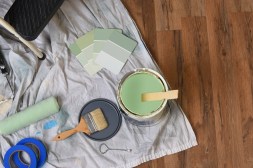The Science Behind Effective Cleaning Routines: What You Need to Know
Cleaning might seem like a simple task, but there’s a science to it that can make all the difference in your home or workplace. Understanding effective cleaning routines not only helps maintain a clean environment but also promotes health and well-being. This article explores the key components of effective cleaning routines and how they can benefit you.
Understanding the Importance of Cleaning Routines
Creating an effective cleaning routine is essential for maintaining hygiene and preventing the spread of germs. Regular cleaning helps reduce allergens, bacteria, and viruses in our living spaces. Establishing a systematic approach saves time and ensures that all areas receive attention, preventing dirt buildup and making future cleaning easier.

The Components of an Effective Cleaning Routine
A successful cleaning routine includes several key components: frequency, tools, techniques, and order. Frequency refers to how often tasks should be performed (daily, weekly, monthly). Tools include appropriate cleaning products and equipment suitable for different surfaces. Techniques involve the best practices for applying these tools effectively. Finally, following a specific order can help streamline your process—starting from top to bottom or left to right ensures thoroughness.
Frequency Matters: How Often Should You Clean?
Different areas require different frequencies of cleaning. High-traffic areas such as kitchens and bathrooms should be cleaned daily or every few days due to their susceptibility to germs. Living rooms might need weekly dusting and vacuuming, while deep cleans (like carpet shampooing or window washing) may only be necessary monthly or seasonally. Assess your space’s needs based on usage patterns.
Choosing the Right Tools for the Job
Selecting appropriate tools is crucial for effective cleaning routines. For example, microfiber cloths are excellent for trapping dust without scratching surfaces while disinfectant sprays help eliminate harmful bacteria on countertops. Investing in good quality brooms, mops, vacuums with HEPA filters can make your routine more efficient by ensuring better results with less effort.
Techniques That Enhance Efficiency
Techniques play a vital role in maximizing your efforts during cleaning sessions. For instance, using the two-bucket method when mopping—one bucket with soapy water and one with clean rinse water—helps avoid spreading dirt around your floors. Additionally, using vertical strokes when dusting minimizes missed spots while working from top to bottom prevents dirt from falling onto already cleaned surfaces.
In conclusion, understanding the science behind effective cleaning routines empowers you to create a cleaner living or working environment efficiently. By recognizing the importance of frequency, utilizing proper tools, adopting efficient techniques—and following an organized approach—you can transform your space into a healthier place that reflects cleanliness at its core.
This text was generated using a large language model, and select text has been reviewed and moderated for purposes such as readability.


